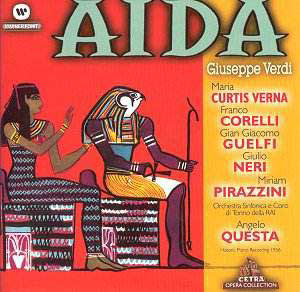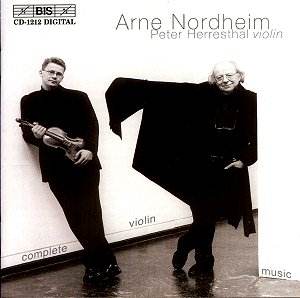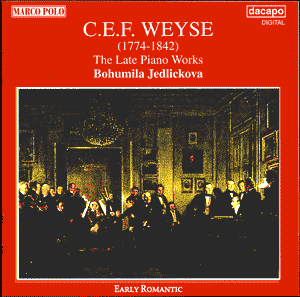 Composer: Giuseppe Verdi
Composer: Giuseppe Verdi
Works: Aida
Performers: Aida: Mary Curtis-Verna, Radames: Franco Corelli, Amneris: Miriam Pirazzini, Amonasro: Gian Giacomo Guelfi, Ramfis: Giulio Neri, The King: Antonio Zerbini, A Messenger: Athos Cesarini, Orchestra & Chorus of Radio Televisione Italiana/Angelo Questa
Recording: Turin, Italy, 18 December 1956 – ADD
Label: Warner Fonit 8573 82642-2 (2 CDs)
Verdi’s Aida, a cornerstone of the operatic canon, continues to captivate audiences with its rich tapestry of human emotions set against the backdrop of ancient Egypt. This recording, part of the ongoing reissue of Cetra’s 1950s complete sets, showcases a formidable cast led by the youthful Franco Corelli in a performance that captures his early brilliance. This revival not only draws attention to Corelli’s iconic portrayal but also provides insight into a period when operatic performances were characterized by a blend of vocal prowess and dramatic interpretation, often taken for granted in today’s more fragmented operatic landscape.
Mary Curtis-Verna’s interpretation of the title role is both sincere and compelling, reflecting a deep understanding of Aida’s emotional struggles. Her warm, attractive voice possesses the necessary heft for the part, yet the timbre occasionally veers toward monotony. This uniformity may detract slightly from the dramatic arcs of her arias, particularly in the climactic moments of “O patria mia,” where one longs for a broader palette of color and expression. Nevertheless, her commitment to the character is palpable, and her efforts to brighten her sound in higher passages are commendable. The recording stands as a testament to her artistry, especially for those familiar with her work at the Met alongside Corelli.
Miriam Pirazzini’s Amneris emerges as a standout, her lush and vibrant tone perfectly encapsulating the character’s complex emotional landscape. Pirazzini’s ability to balance imperiousness with vulnerability is particularly striking; her interpretation of “La vergine degli angeli” is infused with a palpable tension that enhances the drama. While she occasionally encounters strain in the upper register, her overall presence and vocal command are impressive, firmly situating her among the greats of her generation. Gian Giacomo Guelfi’s Amonasro is marked by a robust authority, though his sound can occasionally come across as overly somber in a recorded medium. Giulio Neri’s Ramfis, with his cavernous resonance, provides an imposing presence, embodying the high priest’s gravitas while delivering a performance that is both solid and stylistically appropriate.
Corelli’s performance is a revelation, showcasing his vibrant squillo and powerful high notes that resonate with a thrilling intensity. His interpretation of “Celeste Aida” is particularly notable; he deftly navigates the aria’s challenges, infusing it with both lyrical beauty and dramatic weight. Corelli’s decision to double Aida’s high notes in the Triumphal Scene exemplifies his commitment to filling the operatic space, a characteristic that underscores the tenacity of his early style. Under Angelo Questa’s unobtrusive yet stylish conducting, the orchestral forces, though somewhat restrained by the mono recording technology of the era, support the vocalists effectively, allowing their interpretations to shine through.
The engineering of this recording reflects the era’s constraints, with the orchestra often relegated to the background, a choice that may frustrate those seeking a more balanced sound. However, this decision can also be seen as an homage to the vocal-centric performances of the time, where the stars were indeed the singers, and the orchestra served to enhance their artistry rather than overshadow it. The accompanying booklet offers valuable insights into the artists’ backgrounds, further enriching the listening experience.
This recording of Aida serves as a vivid reminder of an era when operatic performances featured a depth of talent that is rarely matched today. Corelli’s youthful exuberance and the collective strengths of the cast encapsulate a passion for Verdi’s music that resonates powerfully. The technical limitations of the recording are overshadowed by the sheer vitality of the performances, making this a compelling addition to the catalog of Aida recordings. As a historical artifact, it enriches our understanding of Verdi’s masterwork and the artistry that surrounded its execution during a golden age of opera.



